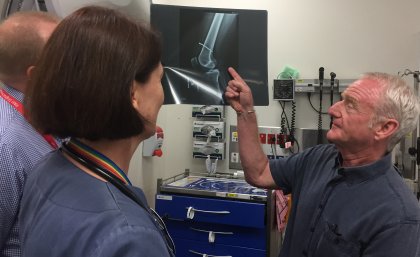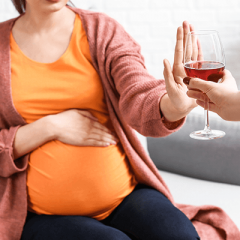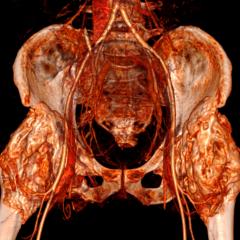
From lifting a mower to trim the hedges to lopping trees with a circular saw, it seems there are endless ways for DIY enthusiasts to end up in hospital emergency departments.
How and why these types of do-it-yourself disasters happen will be the focus of a University of Queensland and QUT study into power tool injuries and prevention strategies.
Princess Alexandra Hospital (PAH) Emergency Department Research Manager and UQ researcher Dr Rob Eley said anecdotal evidence suggested an increase in injuries since the emergence of television DIY renovation programs.
“Many past studies have been based on hospital admissions rather than visits to the emergency department, and we believe this missed a significant number of those who are injured,” Dr Eley said.
“Many people who suffer simple fractures and lacerations are discharged from the ED following treatment and are not admitted to hospital, but their injuries may still be life-changing and require considerable rehabilitation.
“Grinders, circular saws, mowers, trimmers, nail guns and drills can all inflict terrible injuries if used inappropriately or without safety equipment, and many accidents occur due to a momentary lapse in concentration.
“We want to understand how these accidents happen, what age groups are most affected, the tools and tasks commonly involved, and what people could have done differently to avoid them.”
Data will be collected at the PAH and the Royal Brisbane and Women’s Hospital.
QUT Centre for Accident Research and Road Safety – Queensland researcher Associate Professor Kirsten Vallmuur said patients would be invited to participate in interviews, providing invaluable context as to what went wrong.
“We will be asking what caused the incident, where they bought the equipment, what training they had and what safety precautions, if any, they had taken,” Dr Vallmuur said.
“This will give us some sound information to provide to consumer product safety agencies so they can better target injury prevention campaigns.”
The researchers will gather data for six to 12 months, potentially capturing seasonal fluctuations as well as patterns across the days of the week.
Queensland Office of Fair Trading Product Safety Unit manager David Strachan said the research would help product safety regulators improve safety standards and prevent power tool injuries.
The study is funded by the Brisbane Diamantina Health Partners.
Media: Kim Lyell, k.lyell@uq.edu.au, 0427 530 647.



